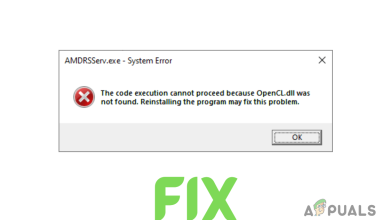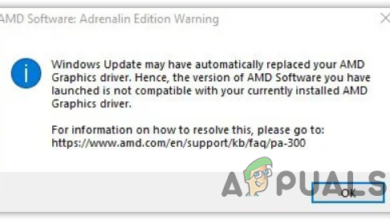Fix: AMD Software has stopped working
Advanced Micro Devices (AMD) is one of the leading microprocessors and graphics cards manufacturer after NVIDIA and has a pretty big share in the market. It constantly conducts research and development and comes with a new product in par with Intel and NVIDIA.

Lately, many users have reported that while installing AMD software or their graphics card, they come across a problem where they are prompted “AMD Software has stopped working”. This behavior is very common in older versions of the operating system i.e. Windows 8/8.1. Since the support for additional support is depreciated by Microsoft, AMD has also pulled back support from these versions.
Solution 1: Installing Windows updates
Microsoft constantly releases updates to its operating system to fix several bugs and introduce new features. After taking feedback from several users, it seemed that AMD software was crashing if you haven’t installed Windows updates on your computer.
Make sure your Windows is fully updated to the latest version and there are no updates pending. This solution can be a game changer.
- Press Windows + S, type “update” in the dialogue box and open the system setting which returns in the result.
- Now check for updates. Download and install them if necessary.

- Restart your computer completely after the update and check if the AMD software still crashes.
Solution 2: Checking Overclocking and SLI/Crossfire
Overclocking allows your processors to perform short bursts of intense computation until they heat up. When they do, their speeds are brought back to normal so normal temperature readings can be achieved. Once done, they are overclocked again and this process continues. Overclocking is available on both Processors and GPU’s.
According to several reports and diagnostics, it seems that overclocking isn’t good in some releases of AMD and causes the software to crash. So if you are overclocking your computer, turn the settings back to normal and see if the problem is solved. Also, try under-clocking a bit and see if this improves the situation.

Furthermore, you should also check your SLI or Crossfire. If you are using more than one graphics cards on your computer, try disabling the other one and see if you can run the AMD one independently. When more than one graphics card is performing computations, jobs are getting divided and the whole process can collapse if any module isn’t configured correctly.
Solution 3: Updating/rolling back Graphics drivers
If you have just got your AMD graphics card right out of the box, in almost all of the cases, the driver will not be updated to the latest build. Also, if you haven’t updated the driver, you should. As Windows 10 progresses in its iterations, AMD also releases newer versions of its driver for compatibility issues.
Furthermore, if updating the drivers don’t work for you, you should consider rolling back the drivers to a previous build. It is not a surprise to know that newer drivers are sometimes not stable or conflict with the operating system.
- Install the utility Display Driver Uninstaller. You can continue without this step but this ensures that there are no remnants of the drivers.
- After installing Display Driver Uninstaller (DDU), launch your computer in safe mode. You can learn how to boot your computer into safe mode by reading our article on it.
- After booting your computer into safe mode, launch the application which was just installed.
- After launching the application, select the first option “Clean and restart”. The application will then automatically uninstall the installed drivers and restart your computer accordingly.

- Boot your computer into normal mode, press Windows + R, type “devmgmt.msc” in the dialogue box and press Enter. Most probably the default drivers will be installed. If not, right-click on any empty space and select “Scan for hardware changes”. Now try tweaking your drivers and see if they are working properly without any error messages like above. If the message still appears, follow the next steps.
- Now there are two options. Either you can search online for the latest driver available for your hardware from the manufacturer’s website such as NVIDIA etc. (and install manually) or you can let Windows install the latest version itself (search for updates automatically).
- You can try downloading and installing the drivers automatically at first. If that doesn’t work, you can download the drivers manually from AMD’s official website and install them using the manual method. Right-click on the driver and select Update driver for the menu to pop up.

- Restart your computer after installing the drivers, try launching graphics resource-consuming applications and check if the problem is solved.
Note: If all the above methods fail, make sure that you don’t have any third-party applications or plugins running in the background which might conflict with AMD software. These also include extensions such as Magic actions for YouTube etc.





